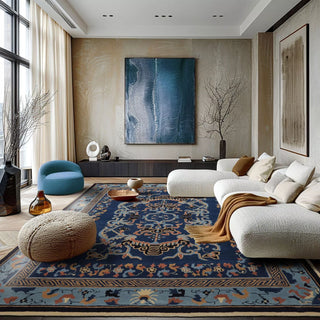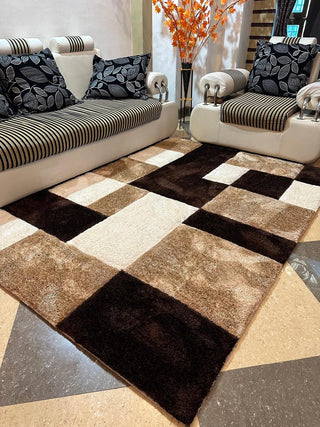Maximizing the appearance of space in smaller rooms is a common challenge for many homeowners. While furniture arrangement and lighting often take center stage, carpets are an underrated design element that can dramatically enhance the perception of space. In this blog, we’ll explore how to use carpets effectively to make small spaces feel larger and more inviting.
1. Choose Light Colors to Brighten the Room
Light-colored carpets, such as beige, cream, or pastel shades, create an illusion of openness by reflecting natural and artificial light. Dark carpets, while cozy, tend to absorb light and make a room feel smaller. Opt for shades that complement your walls and furniture to maintain a cohesive look.
Tip: Pair light-colored carpets with white or neutral-colored walls to enhance the spacious effect.
2. Go for Large-Scale Patterns
Small, busy patterns can overwhelm a compact room, while large-scale patterns provide a sense of continuity and openness. Geometric designs, subtle abstract prints, or oversized florals work particularly well in creating visual flow.
Tip: Avoid overly complex patterns that might clutter the room visually. Simplicity is key in small spaces.
3. Use Stripes to Elongate the Space
Striped carpets are a designer’s secret weapon for making a room appear longer or wider. Horizontal stripes can expand the perceived width of a narrow space, while vertical stripes add depth to shorter rooms.
Tip: Position the stripes in the direction you want the room to feel larger.
4. Opt for Wall-to-Wall Carpeting
Wall-to-wall carpets eliminate breaks in the flooring, creating a seamless appearance that visually expands the room. Unlike rugs, which can sometimes make a space feel segmented, full carpeting enhances continuity.
Tip: Stick to a uniform color or texture for the carpet to maintain the illusion of unity.
5. Layer Rugs Thoughtfully
If wall-to-wall carpeting isn’t an option, layering a large area rug over hardwood or tile can still have a space-enhancing effect. Use rugs with minimal patterns and colors that match the flooring to avoid visual fragmentation.
Tip: Choose a rug that leaves enough floor space visible around the edges to create a border effect, adding depth to the room.
6. Match Carpet Colors with Furniture
When carpets and furniture share similar tones, the room appears less cluttered and more spacious. Contrasting colors can break up the flow and make the room feel crowded.
Tip: Use furniture with slim profiles to complement the airy feel created by the carpet.
7. Use Carpets to Define Zones in Multi-Use Spaces
In small studio apartments or open layouts, carpets can define functional zones, such as a living area or dining space, without the need for physical dividers. This not only optimizes the use of space but also avoids the cramped feeling that walls or partitions might create.
Tip: Choose rugs with simple borders or gradients to subtly mark different areas.
8. Incorporate Texture for Visual Interest
Flat carpets with a smooth finish help create a streamlined look that doesn’t overwhelm the eye. However, you can still incorporate subtle textures, like loop pile or low-pile shaggy carpets, to add depth without making the room feel smaller.
Tip: Avoid heavy or overly plush textures that can dominate the space.
Final Thoughts
Carpets are more than just decorative elements; they’re powerful tools for enhancing the functionality and aesthetics of small spaces. By strategically choosing the right colors, patterns, and styles, you can create an illusion of openness and make even the coziest of rooms feel expansive.
Whether you’re decorating a tiny studio or a compact bedroom, buy carpet online and transform the space into a welcoming and visually spacious haven. Ready to explore options? Check out our latest collection of space-enhancing carpets and rugs designed to suit every style and need!
For more tips on decorating with carpets, follow our blog or contact our experts today!



